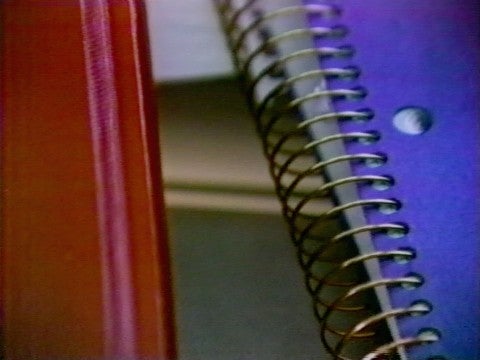Gary Hill grew up surfing and skateboarding in Redondo Beach, California. After graduating from high school in 1969, he made his way to Woodstock, New York. It was there that he pursued his interest in sculpture, studying at the Art Students League and independently with the painter Bruce Dorfman. In 1973 he borrowed a Portapak from Woodstock Community Video—a decision that proved fateful, as Hill became one of the most important artists of experimental video. Highlights of his illustrious forty-year career include receiving a Guggenheim Fellowship in 1986 and the Golden Lion for sculpture at the 1995 Venice Biennale. In 1998 he won the prestigious MacArthur Foundation Fellowship, aka the "Genius" Grant. His work also has been included in six Whitney Biennial exhibitions and in Documenta.
Hill relocated to Seattle in 1985 and established the video program at Cornish College of the Arts. He has taught art at other institutions, including Bard College and SUNY Buffalo, while creating a range of video works that explore his interest in the formal relations between the body and video as well as poetry, philosophy, and the nature of language. Hill’s earlier works focus on the properties of the video medium by integrating and manipulating various visual and audio elements. He often would transform ordinary objects and nonspecific scenes with rhythm, digital effects and editing techniques.
In the late 1970s, Hill began to focus on language—not necessarily words, but the “speaking” or sounds of electronic space that approximate the human voice—or, as he called it, “electronic linguistics.” He constructed a language of electronic images and sounds in works such as Sums & Differences (1978), which switches through a sequence of images of musical instruments and their corresponding sounds at an increasingly rapid pace. Primary (1978) introduces verbal language, which intensifies his dialogue with the medium. Hill displays the primary colors red, green, and blue, and the hues change as his lips repeat the names of each color.
During the 1980s Hill continued to investigate relationships between words and electronic images. He also began to work with the body and develop pieces that act upon the body of the viewer. Inasmuch as it is Already Taking Place (1990), for instance, comprises sixteen uncased monitors of differing sizes, featuring close-up fragments of Hill’s nude body. An ear, nose, elbow, finger, and other parts are heaped together to create a composite self-portrait.
In 1992 Hill created the immersive video installation Tall Ships. Made for Documenta, it is arguably his most celebrated work. In Tall Ships the viewer walks down a completely dark and silent 90-foot-long corridor. Via a mechanism, her movement triggers projected images of people of various ages, ethnicities, and personalities, who advance toward her. If the viewer stands still, the figures do not leave. If she walks away, so do they. The experience reflects one’s state of mind and ease or discomfort when encountering others. Rather than interactivity, Hill says, the piece is the "experience of yourself, and almost a safe place in which to experience this. [I] wanted to make a velvety soft place, for you to meet the stranger of yourself."
Around & About (1980) also deals with how people relate to one another, using the breakdown of one of Hill’s past personal relationships as its point of departure. In the piece, Hill speaks to an imagined counterpart (or perhaps the viewer). Flashes of random manipulated still images—of his office/studio space—“illustrate” his speech as they are shown at the pace of his speaking. That is, they change as each syllable is spoken. The varying sequence and manipulations of the imagery sustains the viewer as Hill talks “around and about” an unknown, unresolved problem with his partner.
The running monologue conveys the frustration or hopelessness of the relationship: “I want you to be with me. I mean you don't have to listen. Just hear me out.” The flow and meaning of the words line up and fall apart repeatedly. This disjointedness is underscored by the elusive, fragmented nature of the imagery as well as its non-relation to the text. As stated in the video, "The ideas just pile up but aren't interwoven. They're not connected or disconnected." Hill creates a relationship evoking the breakdown of his own, wherein imagery is driven by and dependent upon language formally, yet conceptually or symbolically these components are worlds apart. —Kanitra Fletcher

